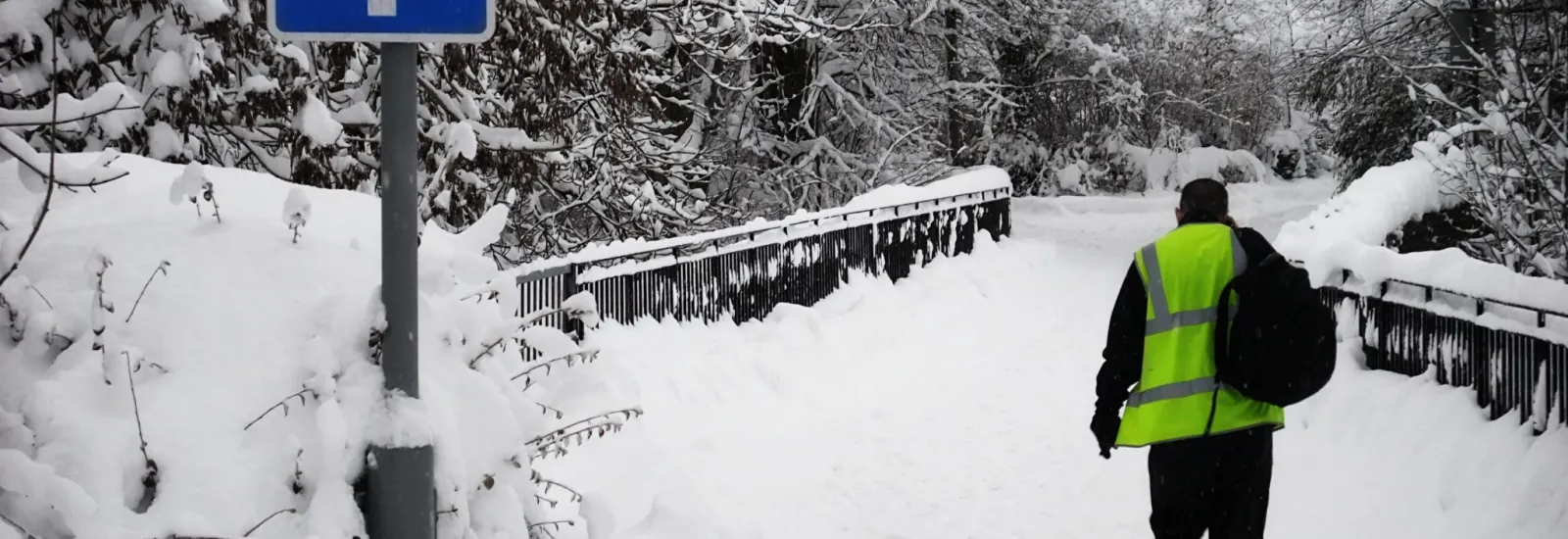
Watch out for extreme cold this winter
 If you live anyplace in the U.S. that isn’t the deep South extreme cold is an ever-present danger during the winter months. According to the National Weather Service (NWS) frigid temperatures and wind can literally occur overnight and negatively affect anyone in mere minutes so you need to know how to protect yourself and your family.
If you live anyplace in the U.S. that isn’t the deep South extreme cold is an ever-present danger during the winter months. According to the National Weather Service (NWS) frigid temperatures and wind can literally occur overnight and negatively affect anyone in mere minutes so you need to know how to protect yourself and your family.
The wind chill warning
The NWS issues many kinds of alerts and warnings but when arctic air combines with wind resulting in extremely cold wind chill values the organization will issue a wind chill warning. When you see or hear this warning it means that frostbite and hypothermia are real dangers. Avoid going outside during the coldest parts of the day such as the early morning and overnight. If you live in an area where extreme cold is common and you must be out in it check the forecast at weather.gov or your favorite weather app TV channel or radio station so you’re aware of wind chill warnings and can take precautions to protect yourself and your family.
How to stay safe during extreme cold
- Leave no skin uncovered. According to the NWS frostbite happens when your body tries to protect your vital inner organs from cold by cutting circulation to outer extremities such as your feet hands nose and ears which can freeze very quickly. If you must go outside during extreme cold even for just a few minutes to get the mail or for kids waiting at the bus stop cover every bit of exposed skin in several layers to protect vulnerable areas from the cold and wetness. Mittens are better than gloves for keeping hands warmer as your fingers are together.
- Don’t go out during the early morning. The best way to avoid the dangers of extreme cold is to stay inside during the coldest time of the day which is typically during the early morning hours according to the NWS. If your kids have to catch the school bus make sure they have somewhere warm and out of the wind to wait such as a heated vehicle.
- Watch what you eat drink and smoke. Your daily lifestyle plays a big role in how your body handles the cold. Eat several warm meals and drink plenty of warm fluids daily because this increases your body’s blood volume and helps keep you warmer inside to prevent frostbite. But try to avoid coffee. It feels warm while you are drinking it but caffeine has the negative effect of constricting blood vessels and preventing blood flow from warming your outer limbs. Smoking cigarettes similarly constricts blood vessels reducing blood flow to your hands and feet. Alcohol also may feel warming going down but it reduces shivering an important bodily function that serves to keep you warm.
-
Watch for signs of frostbite and hypothermia. Act quickly if any extremities have ice crystals forming on them or turn painfully red white blue or black. Frostbite is a real threat that can lead to gangrene and ultimately amputation. If someone feels cold weak and sluggish cannot think clearly and their body heat has dropped below 96°F they could have hypothermia (when your body loses heat faster than it can make heat). For both frostbite and hypothermia immediately move the person to a heated indoor location. Begin warming any frostbite-affected areas using warm water (not hot) or body heat and get medical attention as soon as possible.
-
Watch for worsening signs of exercise-induced asthma. Cold-weather activities such as cross-country skiing ice skating ice hockey and even playing outside during cold weather are more likely to worsen asthma symptoms in both adults and children according to the U.S. National Library of Medicine. The same holds true for extreme cold. Because your nose has the important job of warming and moistening the air you breathe any faster shallower mouth-breathing can cause already sensitive and easily inflamed airways to narrow with colder drier air. To avoid this effect when exercising outdoors during winter wear a mask or double-wrap a scarf around your face to warm up and humidify the air.

